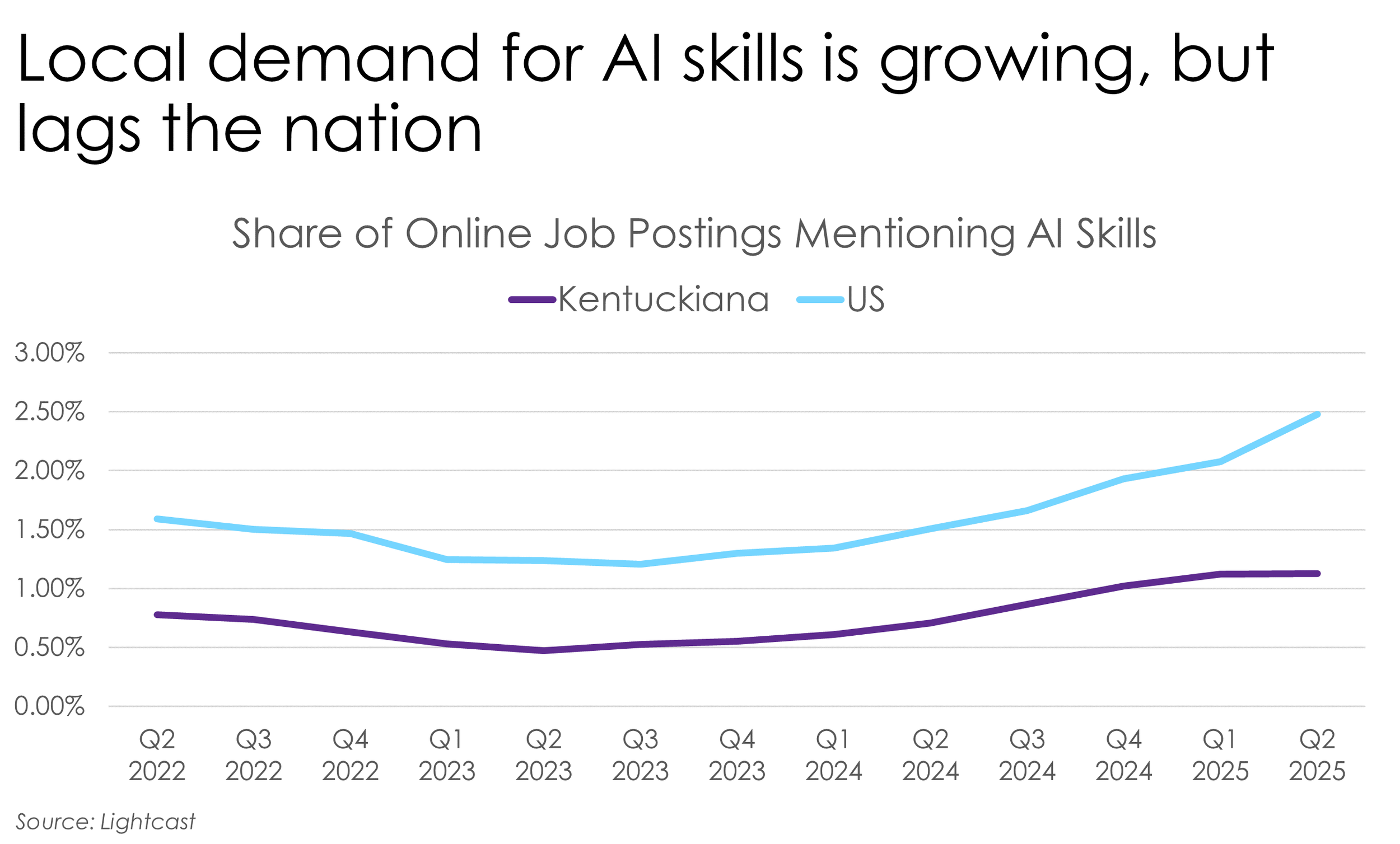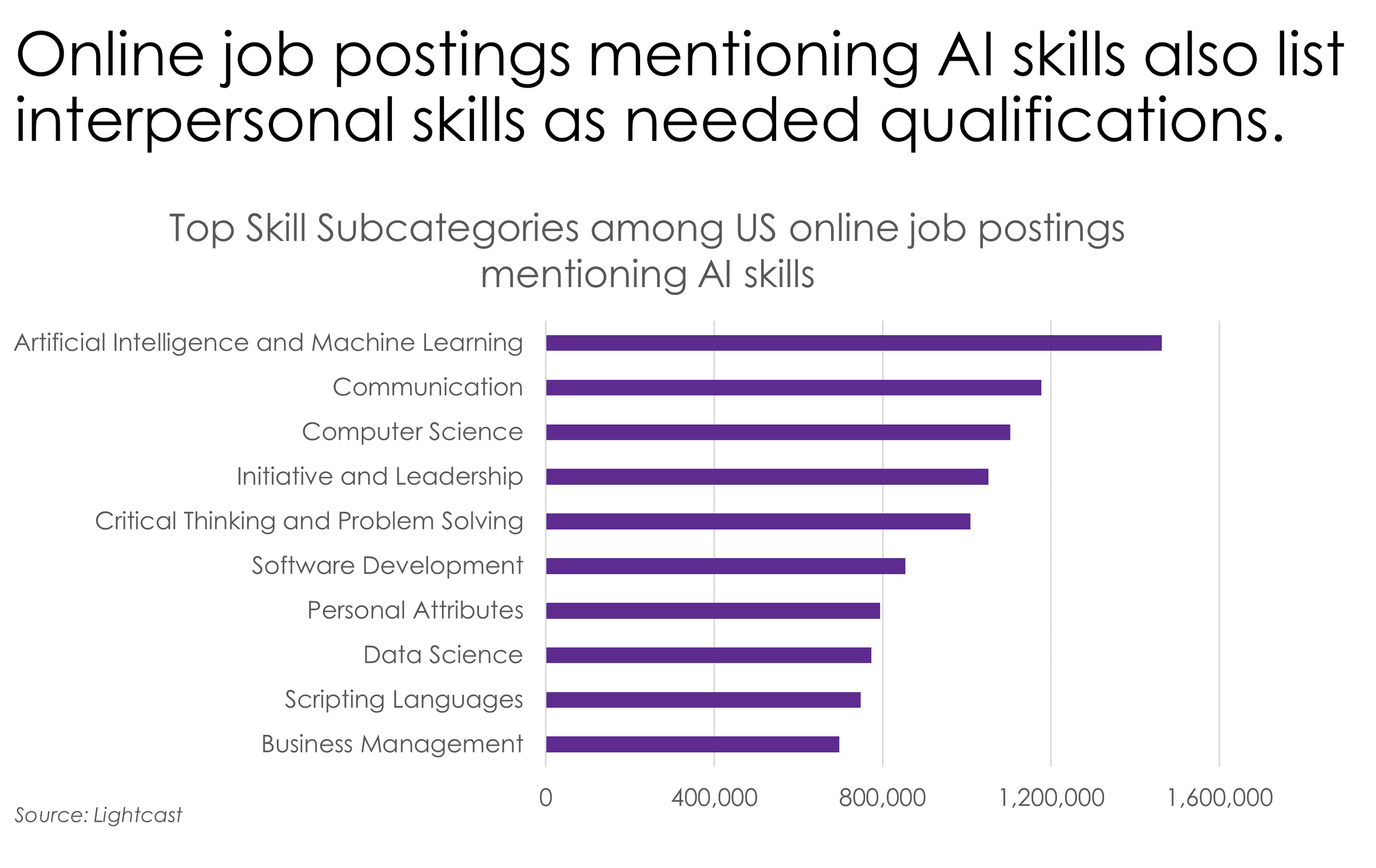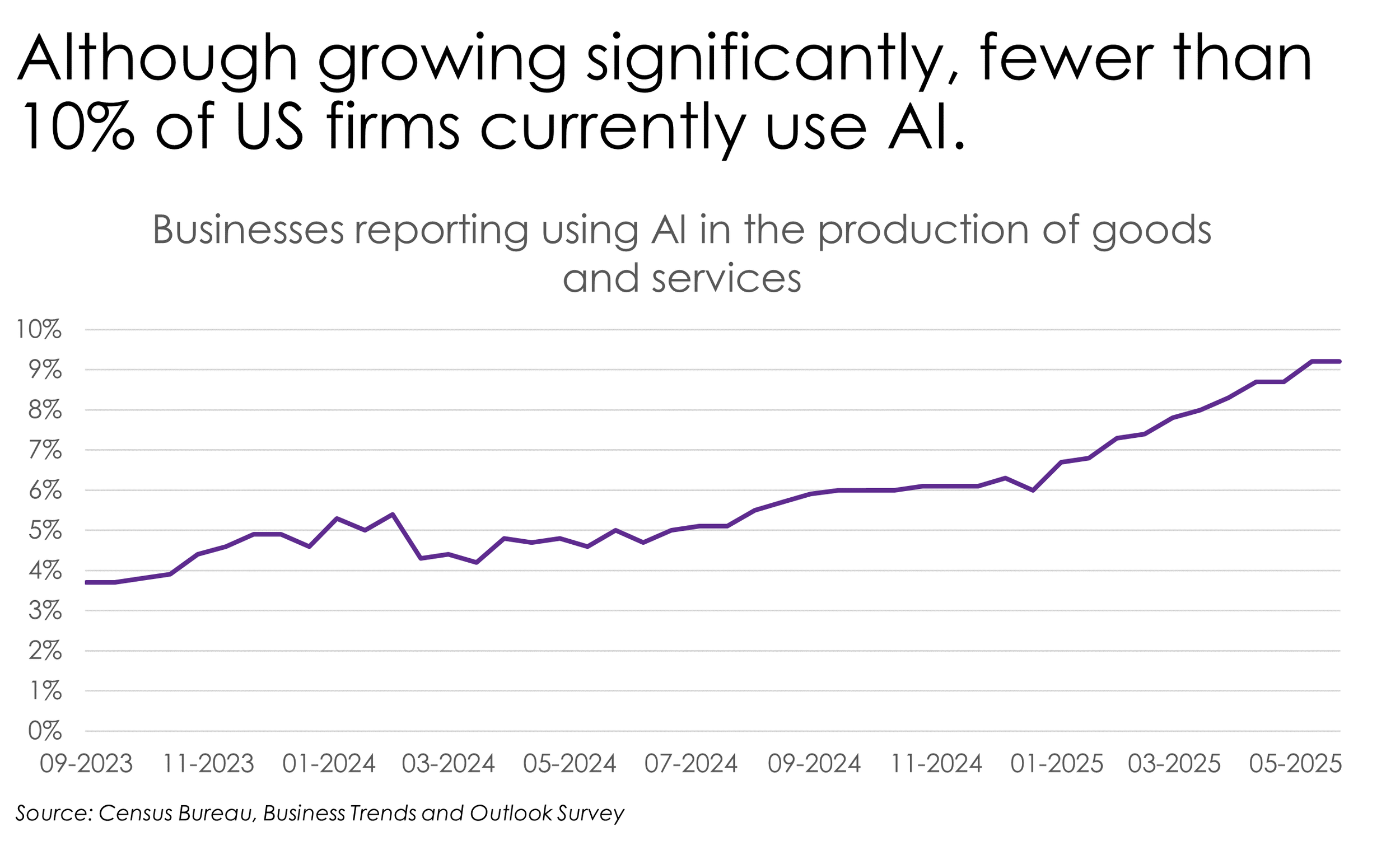Generative AI is here and ready to redefine work
Often described as society’s next general-purpose technology, generative artificial intelligence (AI) brings both significant opportunity and considerable uncertainty to the labor market. Other examples of general-purpose technologies– advances that have a widespread and transformative impact on society and the economy– include the steam engine, electricity, and the internet. In just a few short years, generative AI systems like ChatGPT, Claude, and Copilot have become pervasive, and are poised to reshape how we live and work for decades to come.
CEOs of leading AI firms make big claims about the potential for generative AI to displace hundreds of thousands of workers. Its introduction coincides with broader economic shifts, including inflation, high interest rates, and an uncertain policy environment, all of which are influencing the labor market. It remains unclear how much of the recent economic cooling is related to AI or other economic factors.
Brookings researchers recently highlighted that generative AI will impact a different set of workers compared to past automation waves. Rather than primarily impacting jobs with repetitive, routine tasks, current large language models (LLMs) are well-suited to cognitive, non-routine tasks, such as writing, coding, analysis, or legal drafting. The occupations with the highest level of exposure to AI include tech, clerical, and business and financial workers, where at least half of the tasks could potentially be performed by or alongside AI systems. This pattern breaks from prior automation trends which had greater effects in occupations that don’t typically require a college degree, primarily in manufacturing and logistics.
Given the geographic distribution of jobs across the US with concentrations of tech jobs in large coastal cities, there will likely be hotspots where a larger share of workers experience AI-related disruption. Further Brookings research estimates that just over a third (34%) of Jefferson County, KY’s workers could see generative AI shift half or more of their work tasks. This is in line with the average across urban counties, but lower than coastal tech hubs. The region’s employment concentration in healthcare support, manufacturing, and service occupations are, for now, less susceptible to automation by current generative AI tools.
Local demand for AI skills, while growing, has not kept pace with national trends. The share of local online job postings mentioning AI skills is less than half the national average. According to the AI Job Tracker from the University of Maryland, the Louisville metropolitan area ranks 54th among metro areas for new AI job creation. Neighboring metros rank notably higher, including Nashville (#25), Indianapolis (#30), St. Louis (#31), and Cincinnati (#32).
A key factor in understanding AI’s impact on the labor market is how the technology is applied, rather than what it can theoretically do. AI's transformative power emerges when it's used to augment human capabilities rather than replace them. Research has shown that task-level AI tools, such as code completion assistants or customer service chatbots, can significantly improve worker productivity, especially for less experienced workers, thus potentially reducing inequality within firms.
Employers seem to recognize AI's complementary nature. Online job postings that require AI skills also frequently emphasize the importance of interpersonal strengths such as communication, initiative and leadership, and critical thinking and problem solving.
AI adoption has increased substantially in a short period of time, with more than three times as many firms reporting using AI in the production of its goods and services this past June compared to the fall of 2023. Even so, less than 10% of US firms reported using AI in producing goods and services in June. In Kentucky, it was 7% of businesses.
The variation in AI adoption and applicable policies for its use will play a major role in shaping how quickly and equitably AI affects productivity and the labor market overall. A national survey of teachers by Gallup and the Walton Family Foundation found that the 30% of teachers who use AI weekly report saving nearly 6 hours a week, the equivalent of 6 weeks per year, in their workload. These productivity gains are reported to reduce burnout and improve quality of instruction and student engagement. However, inconsistent policies and unclear norms around AI use in education have resulted in uneven adoption, limiting the technology’s broader potential.
As generative AI continues to evolve and integrate into the economy, its long-term effects on the labor market will depend not just on its technical capabilities, but on how businesses, workers, and policymakers choose to engage with it. The current trends suggest that AI is more likely to shift the nature of work than eliminate it outright, particularly in roles requiring cognitive, non-routine skills. Regions like Louisville may experience slower, more uneven impacts than coastal tech hubs, but still have an opportunity to prepare their workforce for AI’s continued expansion. Strategic investments in digital skills, equitable access to AI tools, and thoughtful policy frameworks will be essential to ensure that AI augments human potential rather than deepens existing inequalities.




